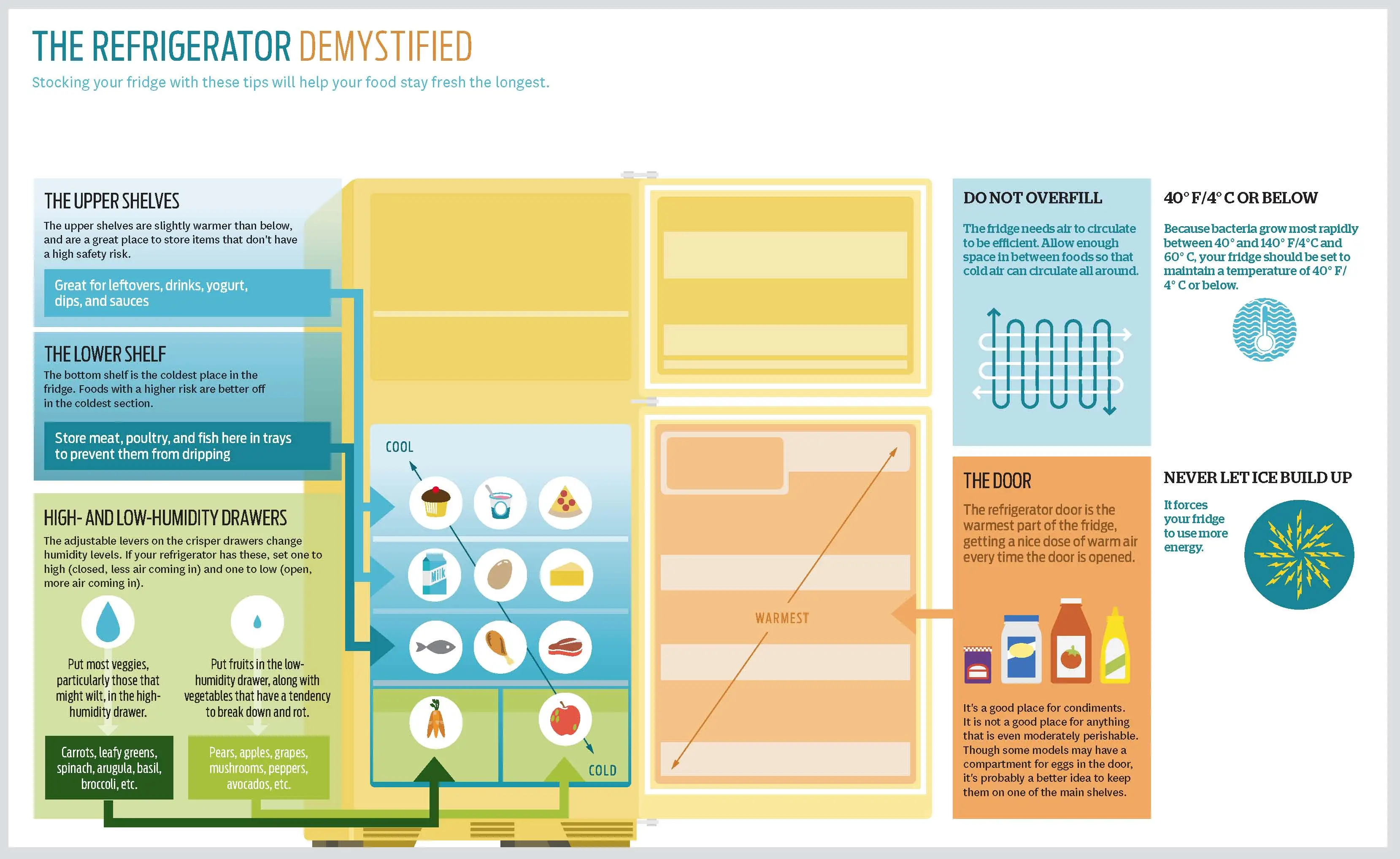How to Clean Out and Stock Your Fridge
You may think of your refrigerator as a place to display childrens' art, but the real art comes from using it correctly. So if you want a clean and stocked refrigerator, here are some questions to explore before your next fridge cleanout:
What’s the deal with those adjustable knobs on the crisper drawers?
Which foods belong on the top and which on the bottom?
Why does cheese get its own drawer?
But if there is one thing you should remember, it’s to ensure that your refrigerator is at or below the optimal temperature. That target number is 40 degrees F. However, the temperature is not the same throughout your refrigerator.
First Thing’s First: Clean Out Your Fridge
IT's best to time your fridge-cleaning before your next big grocery shopping trip so there are fewer food containers to remove. Once you've cleared some space, used a hand-held vacuum or small, clean broom or brush to get rid of crumbs. Look in the corners of drawers and the edges of shelves, where they tend to hide.Then, mix vinegar and hot water into a spray bottle and use it to spray down surfaces. Next, dry the surfaces with a dry sponge or towel.
Get to Know Your Way Around Your Stocked Refrigerator
The upper shelves are warmer than those below, so use them for less risky items such as leftovers, drinks, yogurt and snacks. It’s also a good place to keep a bin or a basket with small tidbits that might get lost elsewhere.
I also keep a tray with an “eat soon” sign for things that need to be used up right away.
The bottom shelf is the coldest place in the refrigerator and is therefore best for meat, poultry and fish. Storing them on a low shelf also reduces the risk of contamination if they leak.
Crisper drawers serve two functions. First they create a different humidity zone than the rest of the refrigerator. Second, they allow for different treatment of those products that could benefit from more airflow. The best thing to do is to create a high-humidity drawer and a low-humidity drawer; see the chart below for what to store in each one.
The refrigerator door is the warmest part of the refrigerator, getting a nice dose of room temperature air every time the door is opened. It’s a good place for condiments. It is not a good place for anything that is even moderately perishable. Though some models may have a compartment for eggs in the door, it’s better to keep them on one of the main shelves.
And the cheese drawer? It’s really designed to give your cheese a place to live without absorbing flavors from other food in the refrigerator, which cheese has a tendency to do.
For more meal-planning and other tips to avoid food waste, check out the Waste-Free Kitchen Handbook or visit SaveTheFood.com.
Partly excerpted from Waste Free Kitchen Handbook by Dana Gunders (Chronicle Books, 2015).

The Refrigerator Demystified: Stocking your fridge with these tips will help your food stay fresh the longest.
Click on the image to view it at its full size.















